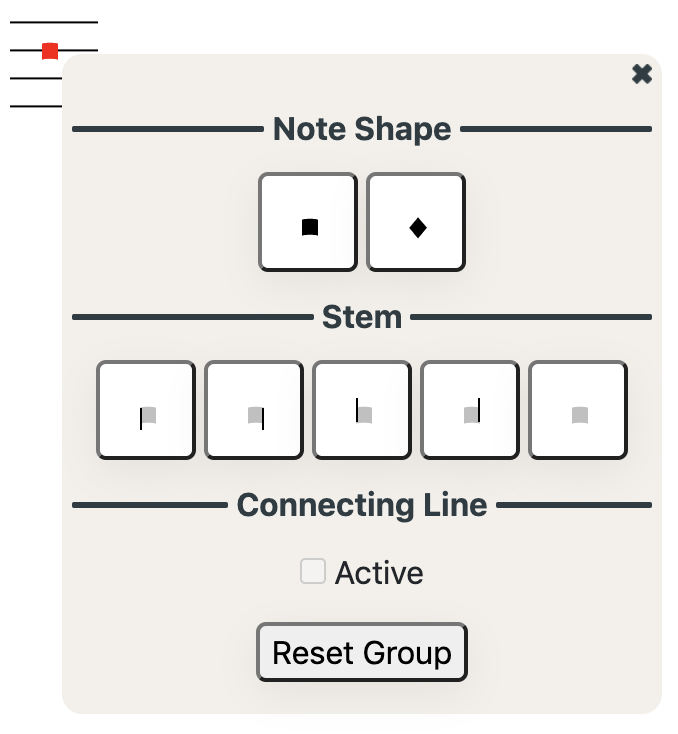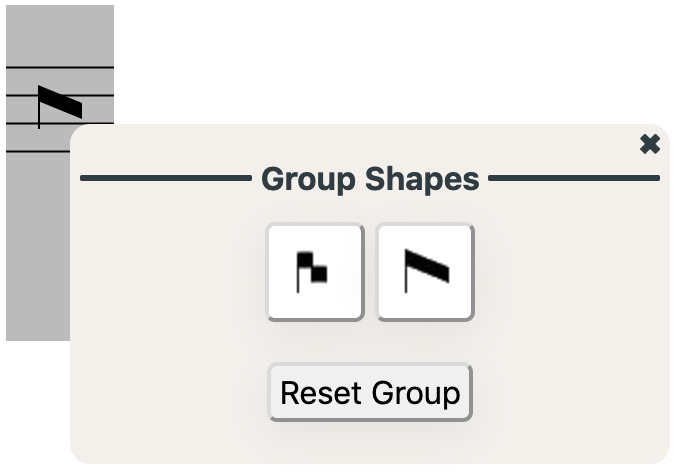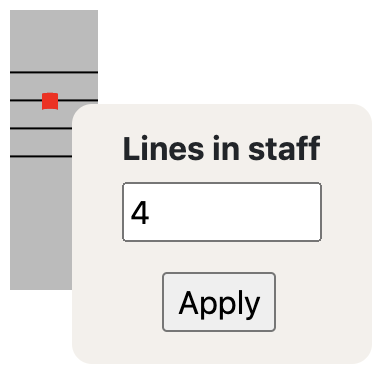A few simple instructions
Medieval Melody Editor allows you encode ancient music for your digital editions.
You can export them in PDF, HTML, and MEI or publish them as a part of the MedMel project.
All you need to do to get started is type the name of the note:
As MedMel is thought for non-mensural medieval monody, there are no specifications for the duration of the notes, as you can see.
To have full control of the input melody, you can use the "Notes" text area.
In the left sidebar, in Style settings, you can select to visualize and edit in Modern Style or Old Style.
WRITING THE MUSIC
The editor uses a small number of conventional signs:
- Blank spaces separate groups of notes sung on different syllables.
- ' : Line breaks in modern editions differ from those of the manuscripts: when changing from modern to ancient notation mode and viceversa, linebreaks are translated into apostrophes.
- ( ) : Use brackets to wrap plicas (liquescences). For example aa(G) will be visualised as such (but check the Settings section):
- - : If you wish to display two single notes on the same syllable (for metrical irregularities or any other reason), separate them with a hyphen: they will not be connected with a slur.
- / : If you wish to emphasise a break in the melody, you can use a slash at the end of the line. You can use it also in the middle of a line to separate bars, if you ever need to.
- // : Use a double slash to display the final bar.
Clefs
- Clefs are relevant only in the Old Style, and they are ignored in the Modern Style.
- Clefs are described by the type of clef (C or F) and the number of line on which it is on, counting from the top.
Accidentals
- h stands for "natural b" and b stands for "b flat".
- For flat accidentals other than b, type underscore (_) before the note;
- To set a b flat as a key signature, type b} (after the clef, if there is one). The bs on the line will not show their flat sign.
- When a b flat is not in the manuscript but it is implied, type an underscore before the regural h: _h. The flat will be printed on top of the note to let your reader know that the accidental is supplied by the editor. The generated melody will play b flat as well.
- For natural accidentals, type % before the note.
- For sharp accidentals, type # before the note.
Neume shapes
If you are editing in Old Style you can change the default shape of the notes and ligatures.
- Click on a single note to choose from the single note menu. You can select the shape, the stem direction and the presence of a connecting line with the following note within a note group.
- Click on the staff around the notes to change the shape of the note group, this is possible only for the most common groups.


Number of lines in staff
If you are editing in Old Style, left-click on the staff to change the number of lines it contains (default is 4).

Messine notation

MedMel allows you to encode Messine notation: just specify the manuscript from which you are transcribing and, if it uses Messine notation, the editor will visualize it.
If you are transcribing from a manuscript with Messine notation that is not in our list, please email us and we will add it.
WRITING THE TEXT
To add the text, type it in the dedicated text area. Remember:
- A hypen ( - ) separates syllables.
Tip: click on the [Syl-] icon to profit of our Magical Almost-Automatic Syllable Separator. - A new line in the text will show on a new staff (in Modern notation).
- If you are transcribing multiple stanzas, separate them with an empty line.
- Use underscores ( _ ) for synalephas. ("Bele_et" will be assigned to a single note or note group and will be visualised as "Bele et").
Text options:
You can encode and visualize mutiple stanzas and multiple versions of a text (interpretative transcription, diplomatic transcription, with or without corrections, etc.).
Click on "Text mode" (or double click on the Text textarea in the Editor) to visualize the Text options:
- Select a version of a text, or Add a new version if you are in the Editor.
- Select if you want to visualize only the text of the first stanza ("First stanza only"), if you want to display the text of each stanza under the same musical staff ("Concise visualization"), or if you want the music to be repeated for every stanza ("Extended visualization").
ANNOTATIONS
To add any annotations, type them in the dedicated text area.
To hide them, uncheck the relevant checkbox from the settings.
Note that you can use HTML tags (such as <i>for italic</i> or <strong>for bold</strong>).
SETTINGS AND FEATURES
Settings
![]()
Customize your visualisation:
- Show/Hide the letter indicating the melodic scheme. This is calculated authomatically. (Modern Style only)
- Decide whether to display the melodic structure as Latin or as Greek letters. (Modern Style only)
- Show/Hide the number of the line. (Modern Style only)
- Show/Hide the annotations.
- Set the shape of the liquescence (as a smaller note or "as a comma"). (Modern Style only)
- Change font and font size.
Save and Delete
![]()
- Click on the above icon to save your transcription.
- If you are a MedMel collaborator, you can publish your transcriptions as part of the database ("Publish"), store them in a common repository, where other collaborators will be able to edit and publish them ("Share with content creators"), or as a private document ("Private"). You can choose to publish the Modern transcription, the Old one, or both.
- To delete a transcription, click on the Save icon and then click on Delete.
NB: if you change the ID, the Manuscript or the Language Field, your transcription will be stored as an new file.
Import
![]() Import MEI Neume files
Import MEI Neume files
Export
![]() Export PDF file
Export PDF file
![]() Download HTML file
Download HTML file
![]() Export MEI Neume encoding
Export MEI Neume encoding
Transcribe mode
![]()
To let you transcribe as confortably as possible, MedMel makes room for your manuscript page direclty in the editor.
Input the URL of the website of your digitised source and see if that works for you. Unfortunately, the mss. from the Vatican Library cannot be embedded, but if you are trascribing from a BnF's manuscript, it's your lucky day: MedMel will fetch the native image and get rid of the fancy widgets.